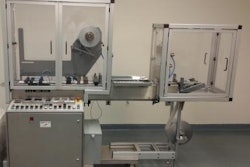“Ensuring the safety of our products – and maintaining the confidence of consumers – is the single most important goal of our industry,” said Dr. Leon Bruner, Chief Science Officer for the Grocery Manufacturers Association (GMA), in a March 29, 2011 public meeting held by the U.S. FDA shortly after the Food Safety Modernization Act (FSMA) was signed into law. Five months later, the Washington, D.C.-based association submitted a document under the Federal Register’s FSMA request for comment provision for FSMA. The document is titled: GMA Food Safety Plan Checklist. (See download link at left.) To quote a passage in the introduction:
“This checklist is provided as an aid to companies that are developing a new Food Safety Plan or revising their existing plan to be compliant with the requirements in FSMA and the regulations and guidance developed from that law. This document is not a comprehensive document on ‘how to’ develop a Food Safety Plan nor a summary of legal requirements, but rather is a tool to assist in the many activities associated with plan development.”
The checklist is arranged in table form and organized under seven items or activity areas:
1. Preliminary Tasks: Inventory and assess current operations against FSMA requirements,
2. Hazard Analysis and Preventive Controls: Identify and evaluate potential hazards that are reasonably likely to occur and identify appropriate preventive controls,
3. Monitoring: Establish monitoring practices for each preventive control,
4. Corrective Actions: Establish procedures for corrective actions to be taken when preventive controls are not properly implemented or are found to be ineffective,
5. Verification and Validation: Establish procedures to verify that the preventive controls are effective and that the Food Safety Plan is working correctly,
6. Records: Establish effective recordkeeping procedures that document the Food Safety Plan, and
7. Training: Establish effective training programs for management and line-workers. If your company is required to have a food safety plan, the checklist is worth downloading for at least three reasons:
• First, the document is based on best practices already in place by leading food/CPG companies.
• Second, FSMA is based on the same best practices, making it very probable that if you follow it, your plant will likely be well on the road with FSMA compliance.
• Thirdly, if you don’t take a proactive role in following best practices such as those outlined in the checklist – and wait for FDA to publish a guidance document – your company may not only lag behind more sophisticated competitors; your company will be at risk of operating with substandard food safety precautions.
Additional, related resources can be found on the association’s website. Two FSMA-specific resources, in particular, can be found in the Food & Product Safety area of the site:
• FDA Food Safety Modernization Act Section-By-Section Analysis, and
• Effective Dates and FDA Requirements in the FDA Food Safety Modernization Act
Both of these are free PDF downloads, and both are authored by Hogan Lovells (whose Elizabeth Fawell contributed to this Playbook).
Additional GMA resources:
• A Technical Guidance and Tools section of GMA’s website offers a wealth of technical
guidance on industry practices and regulatory compliance. Several links are provided and offered as free downloads. For example, a 34-page Food Supply Chain Handbook is offered in English as well as Spanish, French, Chinese and Russian. Other links include guidance on equipment design, salmonella control and facility design.
• A fully automated, online HACCP training course touted for reducing the cost of trainers, travel and related expenses through remote, 24/7 learning. GMA reports that this training courseware is “helping organizations of all sizes train employees at multiple locations, when needed, with fully centralized recordkeeping.
Liked this article? Download the entire playbook here.

























